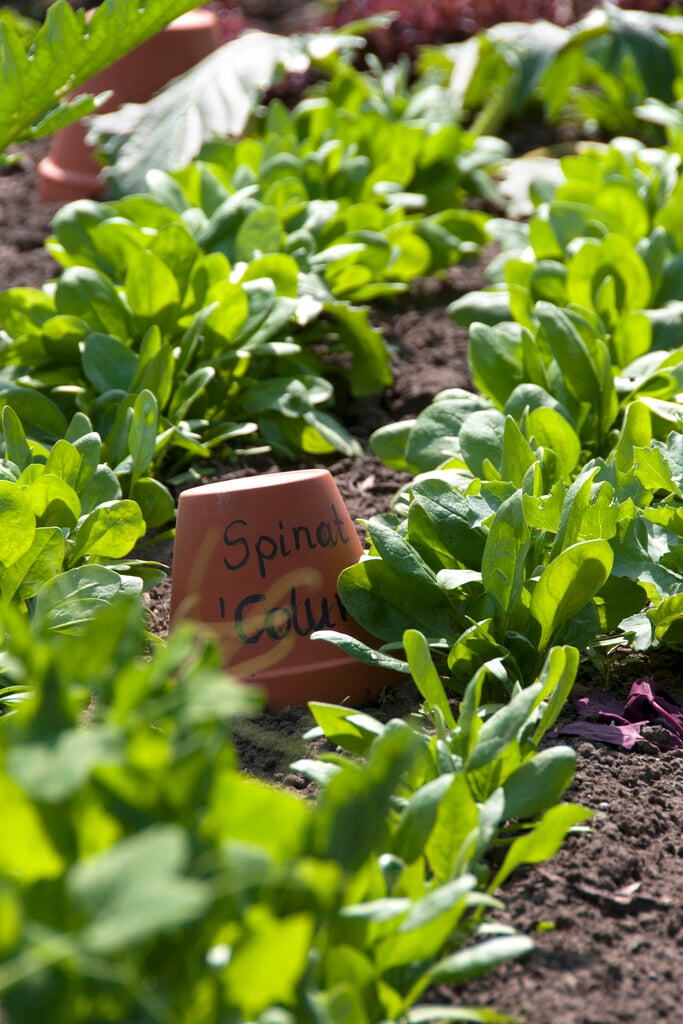Spinacia oleracea
spinach
Spinach is a leafy green annual herb approximately 30cm tall, producing generous harvests of deep-green, crinkled, oval to triangular leaves with a beautiful rich, savoury flavour. The leaves vary in size and flavour, and can be eaten raw or cooked. If left to flower, the yellow-green flowers are inconspicuous and around 3mm
Size
Ultimate height
0.1–0.5 metresTime to ultimate height
1 yearUltimate spread
0.1–0.5 metresGrowing conditions
Moisture
Moist but well–drainedpH
Acid, Alkaline, NeutralColour & scent
| Stem | Flower | Foliage | Fruit | |
| Spring | Green | |||
|---|---|---|---|---|
| Summer | Green | |||
| Autumn | Green | |||
| Winter | Green |
Position
- Full sun
- Partial shade
Aspect
South–facing or East–facing or West–facing
Exposure
Sheltered Hardiness
H4Botanical details
- Family
- Amaranthaceae
- Native to GB / Ireland
- No
- Foliage
- Deciduous
- Habit
- Clump forming
- Genus
Spinacia are annual or biennial herbaceous plants, usually dioecious, with upright stems and smooth leaves that are ovate or triangular. Edible species are cultivated for their leaves (spinach)
- Name status
Correct
- Plant range
- Central and Western Asia
How to grow
Cultivation
Does best on fertile soil rich in organic matter with a steady moisture supply. Winter crops need a sunny position, summer crops benefit from a little shade. Sow from February (under biodegradable fleece or cloches) to the end of May. See spinach cultivation
Propagation
Propagate by seed. See sowing vegetable seeds
Suggested planting locations and garden types
- Patio and container plants
Pruning
No pruning required
Pests
Generally pest-free but may be susceptible to damage by slugs and pigeons
Diseases
May be susceptible to spinach downy mildew
Get involved
The Royal Horticultural Society is the UK’s leading gardening charity. We aim to enrich everyone’s life through plants, and make the UK a greener and more beautiful place.
